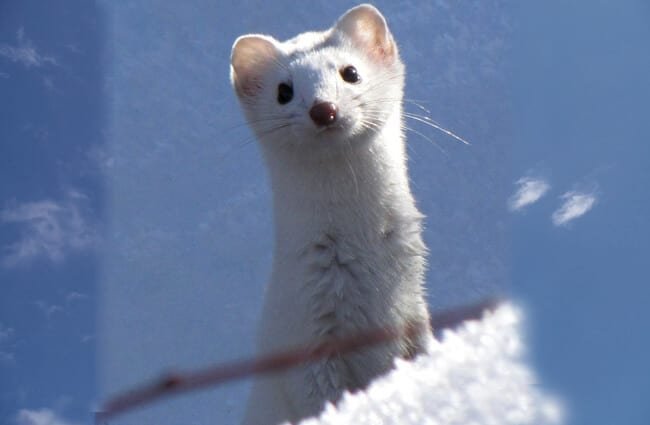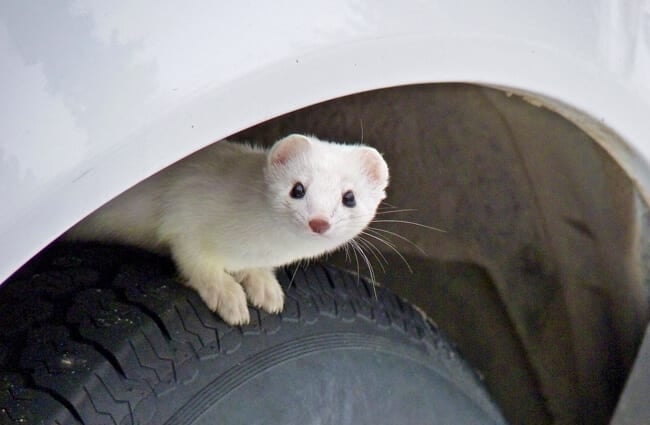The ermine, a creature of striking beauty and remarkable adaptability, holds a special place in both natural history and human culture. Often referred to as a stoat, this small but fierce member of the weasel family is a master of camouflage and a skilled predator. This comprehensive guide delves into the world of the ermine, exploring its biology, behavior, habitat, and its fascinating relationship with humans.

What is an Ermine?
The ermine (Mustela erminea) is a small mammal belonging to the Mustelidae family, which also includes weasels, badgers, otters, and wolverines. Its lithe body, short legs, and long tail give it an unmistakable silhouette. Ermines are renowned for their seasonal coat change. During the warmer months, they sport a rich brown coat, but as winter approaches, they undergo a complete transformation, shedding their brown fur for a stunning snow‑white coat – a perfect adaptation to blend with their snowy surroundings. This winter coat is what historically made the ermine’s pelt so highly prized.
Physical Characteristics
Adult ermines typically measure between 17 to 26 centimeters in length, with males being considerably larger than females. They weigh between 70 to 300 grams. Their bodies are slender and flexible, allowing them to pursue prey into tight spaces. A distinctive feature is their black‑tipped tail, which remains black year‑round, providing a clear contrast to their changing coat color. Their small, rounded ears and sharp teeth are indicative of their predatory lifestyle.
Habitat and Distribution

Ermines have a wide distribution across North America, Europe, and Asia. They thrive in a variety of habitats, including forests, grasslands, meadows, and even agricultural areas. They are particularly associated with areas near water sources, such as rivers, streams, and lakes. Ermines are adept at utilizing different environments, demonstrating their adaptability. In North America, they are found from Alaska and Canada down to the northern United States. In Europe, their range extends from Scandinavia to the Mediterranean. Their presence indicates a healthy ecosystem, as they are sensitive to environmental changes.
Finding Ermines in the Wild
Spotting an ermine requires patience and a keen eye. Look for signs of their presence, such as tracks in snow or mud, or small piles of droppings (scat) near burrows or foraging areas. They are mostly active at night, with peaks during dusk and dawn, but can also be seen hunting during the day. Focus your search near water bodies and areas with dense vegetation. Remember to observe them from a distance and avoid disturbing their natural behavior. Binoculars can be helpful for spotting them in their natural habitat.
Diet and Hunting Behavior

Ermines are carnivores and skilled hunters. Their diet primarily consists of small mammals, such as voles, mice, lemmings, and rabbits. They also prey on birds, eggs, insects, and fish. They are opportunistic feeders, meaning they will consume whatever prey is readily available. Their hunting strategy involves stalking their prey, often following them into burrows or dense cover. They have a remarkable ability to squeeze their slender bodies into remarkably small spaces. Once they catch their prey, they deliver a fatal bite to the neck. Ermines often cache surplus food in burrows, storing it for later consumption.
Reproduction and Life Cycle
Ermines typically breed in the spring. Females are induced ovulators, meaning ovulation is triggered by mating. The gestation period lasts around 28 to 30 days. The litter size varies, but typically ranges from 3 to 8 kits. Kits are born blind and helpless, relying entirely on their mother for care. They are weaned at around 4 to 6 weeks and begin to explore their surroundings. Young ermines become independent at around 8 to 10 weeks of age. They reach sexual maturity at around 1 year old. Ermines have an average lifespan of 2 to 3 years in the wild.
Ermines and the Ecosystem
Ermines play an important role in maintaining the balance of their ecosystems. As predators, they help to control populations of small mammals and birds. This, in turn, can have cascading effects on plant communities and other species. Ermines are also prey animals, providing food for larger predators such as foxes, owls, and eagles. They contribute to nutrient cycling through their foraging activities and waste products. Their presence is often indicative of a healthy and diverse ecosystem.

Ermines and Human History
Throughout history, ermines have held cultural significance for various societies. Their beautiful white winter coats were highly prized by royalty and nobility, often used to trim garments and symbolize status. The ermine became associated with purity and nobility, and was often featured in heraldry and coats of arms. In some cultures, the ermine was believed to symbolize perseverance, as it was said to prefer death rather than soiling its white coat. Historically, ermines were also trapped and farmed for their pelts.
Interactions with Humans Today
Today, ermines are generally protected by law, and trapping is regulated or prohibited in many areas. They occasionally come into conflict with humans when they prey on poultry or small livestock, but such instances are relatively rare. Ermines can pose a minor risk of transmitting diseases, such as rabies, but this is uncommon. It is important to observe ermines from a distance and avoid handling them.
Advanced Ermine Biology
Ermine populations exhibit cyclical fluctuations, particularly in northern regions. These cycles are linked to fluctuations in lemming populations, which serve as a primary food source. When lemming numbers are high, ermine populations thrive. However, when lemming numbers crash, ermine populations decline. This predator‑prey dynamic highlights the intricate relationships within ecosystems. Ermines also exhibit a degree of plasticity in their hunting strategies. They can adapt their techniques depending on the type of prey available and the environmental conditions.

Captive Ermine Care
For zookeepers and wildlife rehabilitators caring for ermines, providing a stimulating and enriching environment is crucial. Enclosures should be spacious, with opportunities for climbing, burrowing, and exploring. A varied diet consisting of small mammals, birds, and insects is essential. Regular veterinary care and monitoring are necessary to ensure the ermine’s health and well-being. It is important to minimize human contact and provide the ermine with plenty of privacy. Ermines are naturally curious and playful, so providing them with toys and enrichment items can help to keep them mentally stimulated. Careful hygiene protocols are also essential to prevent the spread of diseases.
The ermine, a testament to nature’s ingenuity, continues to captivate and inspire. Its adaptability, beauty, and ecological importance make it a truly remarkable creature. Understanding its biology and behavior is essential for ensuring its conservation and protecting its vital role in the ecosystems it inhabits.

![Red Angus Closeup of a beautiful Red Angus cowPhoto by: U.S. Department of Agriculture [pubic domain]https://creativecommons.org/licenses/by/2.0/](https://animals.net/wp-content/uploads/2020/03/Red-Angus-4-238x178.jpg)




![Red Angus Closeup of a beautiful Red Angus cowPhoto by: U.S. Department of Agriculture [pubic domain]https://creativecommons.org/licenses/by/2.0/](https://animals.net/wp-content/uploads/2020/03/Red-Angus-4-100x75.jpg)

